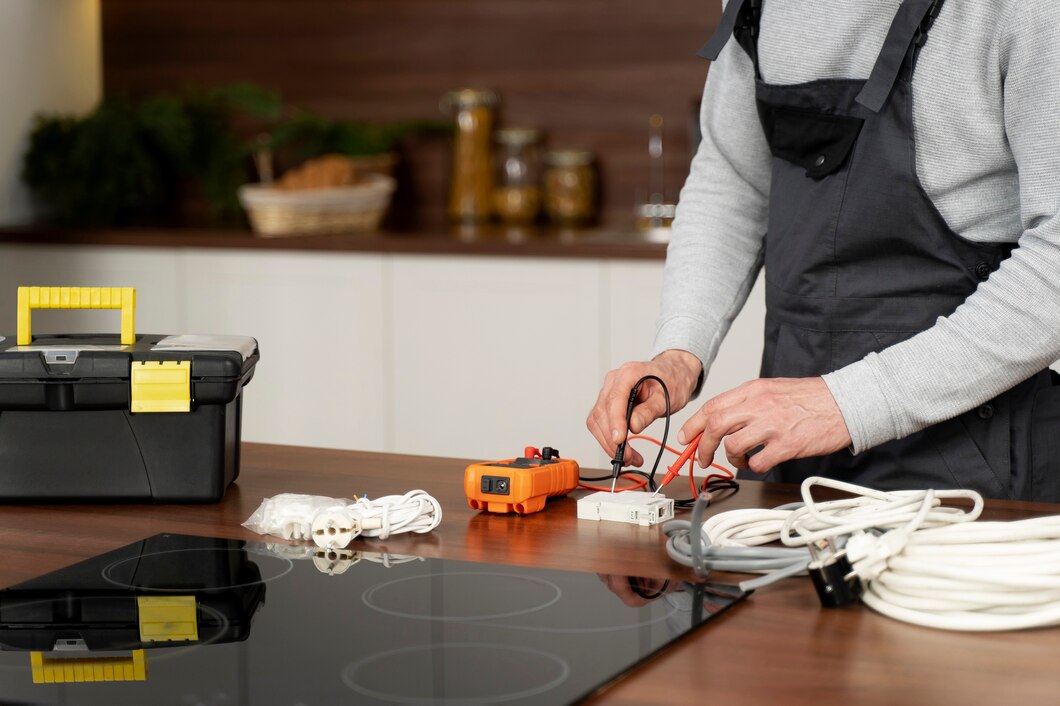Power tools are the backbone of many industries and DIY projects, offering efficiency, precision, and speed. Whether you’re a professional tradesperson or a dedicated hobbyist, your power tools are likely some of your most valuable assets.
However, like any machinery, power tools require proper maintenance to perform at their best and avoid potential hazards. Neglecting maintenance can decrease efficiency, create safety risks, and cause costly repairs or replacements. If you have RYOBI products, look for troubleshooting for RYOBI power tools or reach out.
In this comprehensive guide, we’ll provide expert tips for maintaining power tools to help you sidestep common pitfalls and prolong the lifespan of your equipment.
Regular Cleaning
Regular cleaning is one of power tool maintenance’s most straightforward yet crucial aspects. Dust, debris, and residues can accumulate over time, hindering performance and causing premature wear. After each use, take the time to clean your tools thoroughly. Use a brush or compressed air to remove debris from vents, switches, and other crevices.
Pay special attention to areas where dust accumulates, such as around the motor or cooling fans. For stubborn grime, use a mild detergent and a damp cloth to wipe down surfaces, ensuring no residue is left behind.
Lubrication
Proper lubrication is essential for keeping your power tools running smoothly and extending their lifespan. Refer to the manufacturer’s guidelines to determine the appropriate lubricants and intervals for lubricating your tools.
Following the manufacturer’s recommendations, apply lubricant to moving parts such as bearings, gears, and shafts. Be careful not to over-lubricate, as excess lubricant can attract dust and debris, potentially causing more harm than good. Regularly inspect lubricated components to ensure they are adequately lubricated and functioning correctly.
Inspection
Regular inspections are crucial for identifying potential issues before they escalate into major problems. Periodically inspect your power tools for wear, damage, or malfunction. Check for loose or damaged parts, frayed cords, and signs of overheating or burning. Pay attention to any unusual noises, vibrations, or odours during operation, as these can indicate underlying issues. Addressing problems early on can prevent further damage and ensure the safety and reliability of your tools.
Storage
Proper storage for your power tools is crucial for longevity and optimal performance. You’ll want to safeguard them against potential damage and the harmful effects of the environment. This means finding a suitable space that’s clean, dry, and free from moisture, dust, and extreme temperatures. Whether it’s a workshop, garage, or storage room, maintaining these conditions will help prevent rust, corrosion, and other forms of deterioration.
Consider investing in protective cases or covers for your tools to provide an extra layer of protection. These barriers shield them from accidental impacts, scratches, and debris accumulation, especially when not used actively. By keeping your tools encased when idle, you minimise the risk of wear and tear, ensuring they remain in top-notch condition for extended periods.
Furthermore, organising your storage area is key to preserving your tools and optimising your workspace. Hang tools with cords to prevent tangling and potential damage to the cords themselves. This simple practice not only prolongs the lifespan of your tools but also makes them easier to locate and retrieve when needed.
A well-maintained storage system ensures your tools are ready for action whenever needed, saving you time and hassle in the long run. So, take extra care to store your power tools properly, and you’ll reap the benefits of their reliability and longevity for years.
Sharpening and Blade Maintenance
Sharp blades are essential for achieving clean cuts and optimal performance. Inspect blades for dullness, chips, or other damage, and sharpen or replace them. Follow the manufacturer’s recommendations for sharpening angles and techniques to ensure optimal performance and longevity. Keep blades clean and free of resin, sap, or other residues that can affect cutting performance.
Battery Care (if applicable)
If your power tools are cordless, proper battery care is essential for maximising their performance and lifespan. Follow the manufacturer’s guidelines for charging, storing, and maintaining batteries. Avoid overcharging or completely discharging batteries, which can shorten their lifespan and affect performance—store batteries in a cool, dry place away from direct sunlight and extreme temperatures. Periodically inspect batteries for signs of damage or deterioration and replace them as needed.
Safety First
Above all, priority when should be prioritised using and maintaining power tools. Familiarise yourself with the proper operation of each tool and use appropriate safety gear, such as goggles, gloves, and hearing protection. Always disconnect tools from power sources before performing maintenance or making adjustments. Keep work areas clean, well-lit, and clutter-free to prevent accidents and injuries.
Conclusion
By following these expert tips for maintaining power tools, you can avoid common pitfalls and ensure your equipment’s longevity, efficiency, and safety. Remember that proper maintenance not only prolongs the lifespan of your tools but also enhances their performance, saving you time, money, and frustration in the long run. Treat your power tools with care and respect; they will continue to serve you reliably for years.




